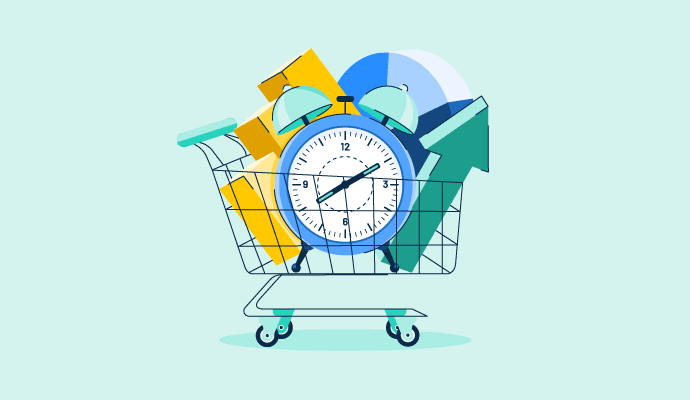June 6, 2023
 by Sagar Joshi / June 6, 2023
by Sagar Joshi / June 6, 2023

Buy now pay later (BNPL) lets customers purchase products immediately and defer payments over time. Think of it as a digital-age layaway plan with the added bonus of being able to enjoy your purchases as soon as possible.
Consumers across the globe are embracing BNPL as an alternative to bank credit cards and loans. It's a way to manage cash flow, divide hefty costs into manageable installments, and satisfy the need for instant gratification with the click of a button.
The appeal is palpable, particularly among younger generations who are cautious about debt but also engaged in e-commerce. From a business perspective, BNPL offers a value proposition. Retailers and e-commerce platforms utilize these services to enhance the customer experience, increase sales conversion rates, and attract a broader base.
Many businesses use installment payment software to provide BNPL options to their customers. They cater to the “I want it now”' economy without adding immediate financial burden on their customers, instilling brand loyalty and promoting repeat purchases. Let's look at exciting BNPL statistics to understand the concept and how the market and users react.
The BNPL concept means consumers can purchase goods and pay over a period of time. Let's delve into the world of BNPL, with some of the top industry statistics shaping this revolutionary trend.
The buy now, pay later system has emerged as a game-changing force on the global stage. No longer confined to specific regions or demographics, it's reshaping retail and e-commerce worldwide.
Below are global market statistics about how BNPL is redefining the future of financial transactions across continents.
The BNPL phenomenon isn't just about enormous market valuations – it's also about the people using these services. Millions of individuals around the globe have embraced this innovative financial solution, altering the course of e-commerce and brick-and-mortar retailers alike.
of individuals have used a BNPL service at some point, with nearly half currently making payments via such a service.
Source: C+R Research
In the BNPL arena, understanding the demographics behind the growing statistics leads to understanding the seismic shift in consumer finance.
of BNPL users regularly use the service, and 80% of users utilize a service at least every six months.
Source: Forbes
The explosive growth of the BNPL industry isn't merely a tale of market values and user demographics. It's a story of preferences, choices, and the shifting dynamics of consumer behavior. Let's shed some light on the motivations fueling the trend.
of survey responses prove that clarity of fees or interest rates was the primary reason for using BNPL services.
Source: Insider Intelligence
The BNPL revolution isn't just transforming how you pay. It's also changing what you buy. As BNPL services become increasingly popular, they profoundly influence consumer purchasing patterns.
As the BNPL phenomenon continues its rapid expansion, its influence on the lending landscape promises to be profound. Let's read about trends, potential shifts, and exciting prospects in the BNPL revolution.
BNPL's adoption across a diverse range of consumers and the surge in partnering businesses indicate that BNPL is more than just a fad. It's a transformative financial trend shaping the future of retail and e-commerce.
View these statistics within a broader context. The potential benefits for both businesses and consumers are substantial, but so are the potential risks and challenges. As with any financial service, understanding the terms and potential pitfalls is key.
As BNPL continues its trajectory, businesses must strategically weigh the potential increase in sales against the costs associated with these programs. Consumers need to responsibly navigate these services, ensuring they understand the terms of their agreements and can comfortably manage their payments.
With clever use and transparent practices, the BNPL model can be a win-win, delivering value to consumers and businesses alike while shaping the financial landscape of the future.
Learn more about how digital payments are shaping the global payment industry.
Sagar Joshi is a former content marketing specialist at G2 in India. He is an engineer with a keen interest in data analytics and cybersecurity. He writes about topics related to them. You can find him reading books, learning a new language, or playing pool in his free time.
Imagine the thrill of buying that designer bag you've been eyeing, knowing you won't pay a...
 by Austin Talley
by Austin Talley
The quest to understand customer behaviors spans decades.
 by Danylo Kriukov
by Danylo Kriukov
Payroll is a business enabler.
 by Sagar Joshi
by Sagar Joshi
Imagine the thrill of buying that designer bag you've been eyeing, knowing you won't pay a...
 by Austin Talley
by Austin Talley
The quest to understand customer behaviors spans decades.
 by Danylo Kriukov
by Danylo Kriukov


